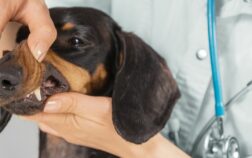Last Updated on April 25, 2024 by admin
Have you ever wondered how dachshunds manage to breathe comfortably under blankets? These adorable little dogs have a unique way of maneuvering themselves and adapting to different environments, including snuggling up under blankets. In this article, we will explore the fascinating breathing habits of dachshunds when they are tucked away and cozy, shedding light on the secrets behind their adorable burrowing behavior. So, next time you find your furry friend beneath the covers, you’ll understand the clever techniques they employ to ensure their breathing remains steady, even in their tucked-away sanctuary. Get ready to be charmed by their ingenuity!
Anatomy of Dachshunds
Dachshunds, also known as wiener dogs, have a unique anatomy that sets them apart from other dog breeds. Understanding their anatomy is crucial in ensuring their overall health and well-being.
Respiratory system of Dachshunds
Dachshunds have a respiratory system similar to other dog breeds. They have a nose, mouth, trachea (windpipe), and a pair of lungs. However, their elongated body shape can affect their respiratory system.
Unique features of Dachshund anatomy
One of the distinguishing features of Dachshunds is their long, narrow chest cavity. This characteristic can impact their breathing and make them more prone to certain respiratory issues. Additionally, their short legs and long spine can put pressure on their organs, including the lungs, which can affect their breathing patterns.

Dachshunds’ Breathing Habits
Understanding the normal breathing patterns of Dachshunds is essential for identifying any potential breathing problems.
Normal breathing patterns
Dachshunds typically have a regular breathing pattern, characterized by smooth inhalations and exhalations. Their breathing rate and depth can vary depending on their activity level and the surrounding environment.
Respiration rate
On average, Dachshunds have a resting respiratory rate of 15-30 breaths per minute. However, this rate can increase during physical exertion or in stressful situations. It’s important to monitor any significant changes in their breathing rate, as it could indicate an underlying health issue.
Breathing sounds
Dachshunds, like many other breeds, can make various sounds while breathing. It’s normal for them to make slight snuffling or snoring sounds during sleep. However, if you notice any wheezing, gasping, or struggling sounds, it may be a sign of respiratory distress and should be addressed promptly.

The Effects of Blankets on Dachshunds’ Breathing
Many Dachshund owners have noticed their furry companions’ affinity for blankets. While blankets can provide comfort and warmth, it’s important to understand how they can affect their breathing.
Why do Dachshunds like blankets?
Dachshunds have a natural instinct to burrow and seek shelter. Their short hair and low body fat make them susceptible to cold temperatures, leading them to seek warmth by snuggling under blankets.
How blankets can affect breathing
When Dachshunds burrow under blankets, it can create an environment with limited airflow. This restricted ventilation can cause them to breathe in recycled air, potentially leading to a decrease in oxygen intake and an increase in carbon dioxide levels.
Potential risks of using blankets
While blankets can provide comfort, excessive use or improper ventilation can pose risks to a Dachshund’s breathing. It’s important to be mindful of these risks and take necessary precautions to ensure their respiratory health.
Tips for Ensuring Healthy Breathing
To ensure healthy breathing for your Dachshund, here are some tips to keep in mind:
Proper ventilation under blankets
If your Dachshund loves burrowing under blankets, ensure that there is ample space for fresh air to circulate. Avoid tightly wrapping the blanket around them, as it can restrict their breathing. Opt for a loose and breathable blanket material to promote proper airflow.
Regular monitoring of breathing
Pay close attention to your Dachshund’s breathing patterns, both while they are under blankets and in other situations. If you notice any labored breathing, excessive panting, or unusual sounds, consult with your veterinarian for a thorough examination.
Choosing the right blanket material
When selecting blankets for your Dachshund, choose materials that are breathable and hypoallergenic. Avoid heavy or thick blankets that can trap heat and hinder proper ventilation. Opt for lightweight and natural fabrics that allow for airflow while providing warmth.
Common Breathing Issues in Dachshunds
Despite their unique anatomy, Dachshunds can still experience common respiratory issues experienced by other dog breeds.
Reverse sneezing
Reverse sneezing is common in Dachshunds and can be alarming for owners. It is characterized by sudden episodes of rapid inhalation and snorting noises. While generally harmless, it is essential to differentiate between reverse sneezing and other serious respiratory conditions.
Brachycephalic airway syndrome
Although not as prevalent in Dachshunds compared to brachycephalic breeds, such as Bulldogs or Pugs, they can still experience brachycephalic airway syndrome to a lesser degree. This condition is characterized by narrowed airways, which can lead to breathing difficulties and overheating.
Obesity-related breathing problems
Dachshunds are prone to obesity, which can exacerbate breathing problems. Excess weight can put additional strain on the respiratory system, making it harder for them to breathe properly. Regular exercise and a balanced diet are key to maintaining a healthy weight and promoting proper breathing.
Recognizing Signs of Distress
It is crucial for Dachshund owners to be able to recognize signs of respiratory distress. By being attentive to your furry friend’s behavior, you can help identify potential issues.
Abnormal breathing sounds
If your Dachshund starts making abnormal breathing sounds, such as wheezing, rasping, or choking noises, it’s a clear sign that their breathing is compromised. These sounds can indicate respiratory distress and should be addressed promptly by a veterinarian.
Struggling to breathe
If you notice your Dachshund struggling to breathe or gasping for air, it is an emergency situation. Contact your veterinarian immediately or take your dog to the nearest animal hospital for urgent care.
Restlessness and discomfort
Dachshunds experiencing breathing difficulties may exhibit restlessness, pacing, or an inability to settle comfortably. If your dog seems unusually agitated or uncomfortable, it could be a sign of respiratory distress, and medical attention should be sought.
Precautions for Dachshund Owners
As a responsible Dachshund owner, there are precautions you can take to ensure your furry friend’s respiratory health.
Avoid overheating
Dachshunds are particularly susceptible to overheating due to their low body fat and long bodies. Avoid exposing them to high temperatures or leaving them in hot environments, as it can lead to heatstroke or breathing difficulties.
Provide alternative cooling spaces
Offer your Dachshund alternative ways to cool down, especially during hot weather. Provide access to shaded areas, fresh water, and consider using cooling mats or fans to help regulate their body temperature.
Consult a veterinarian if concerns arise
If you have any concerns about your Dachshund’s breathing or notice any abnormal symptoms, it is crucial to seek professional advice. Veterinarians can provide a proper diagnosis, offer treatment options, and guide you on how to maintain your Dachshund’s respiratory health.
Training and Encouraging Good Breathing Habits
Training your Dachshund and promoting good breathing habits can contribute to their overall well-being.
Using positive reinforcement
Train your Dachshund to be comfortable with handling around the head area, such as checking their nose and mouth. This way, you can easily monitor their breathing and detect any abnormalities.
Introducing relaxation techniques
Teaching your Dachshund relaxation techniques, such as deep breathing exercises or providing calming massages, can help reduce anxiety and promote healthy breathing patterns.
Creating a comfortable sleeping environment
Ensure that your Dachshund’s sleeping area is conducive to proper breathing. Use a well-ventilated bed, avoid crowding it with excessive blankets, and maintain a cool temperature in their sleeping area.
Health Benefits of Proper Breathing
Promoting healthy breathing habits in your Dachshund can have significant benefits for their overall health and well-being.
Improved oxygen intake
Proper breathing allows for optimal oxygen intake, which is vital for maintaining healthy organs and body functions. Ensuring that your Dachshund’s respiratory system is functioning at its best can contribute to their overall vitality.
Reduced risks of respiratory ailments
By taking preventative measures and monitoring your Dachshund’s breathing, you can reduce the risk of developing respiratory issues. Addressing any potential concerns early on can help prevent more severe health problems in the future.
Enhanced overall well-being
When your Dachshund can breathe comfortably, they can fully enjoy their daily activities without any unnecessary strain or discomfort. It allows them to be more active, engage in play, and maintain a higher quality of life.
Conclusion
Understanding the unique breathing needs of Dachshunds and taking steps to ensure their respiratory health is essential for every owner. By being aware of their anatomy, recognizing signs of distress, and promoting good breathing habits, you can help your furry friend live a happy and healthy life. Always consult with a veterinarian regarding any concerns or questions you may have about your Dachshund’s breathing, as they are best equipped to provide professional guidance and care.




